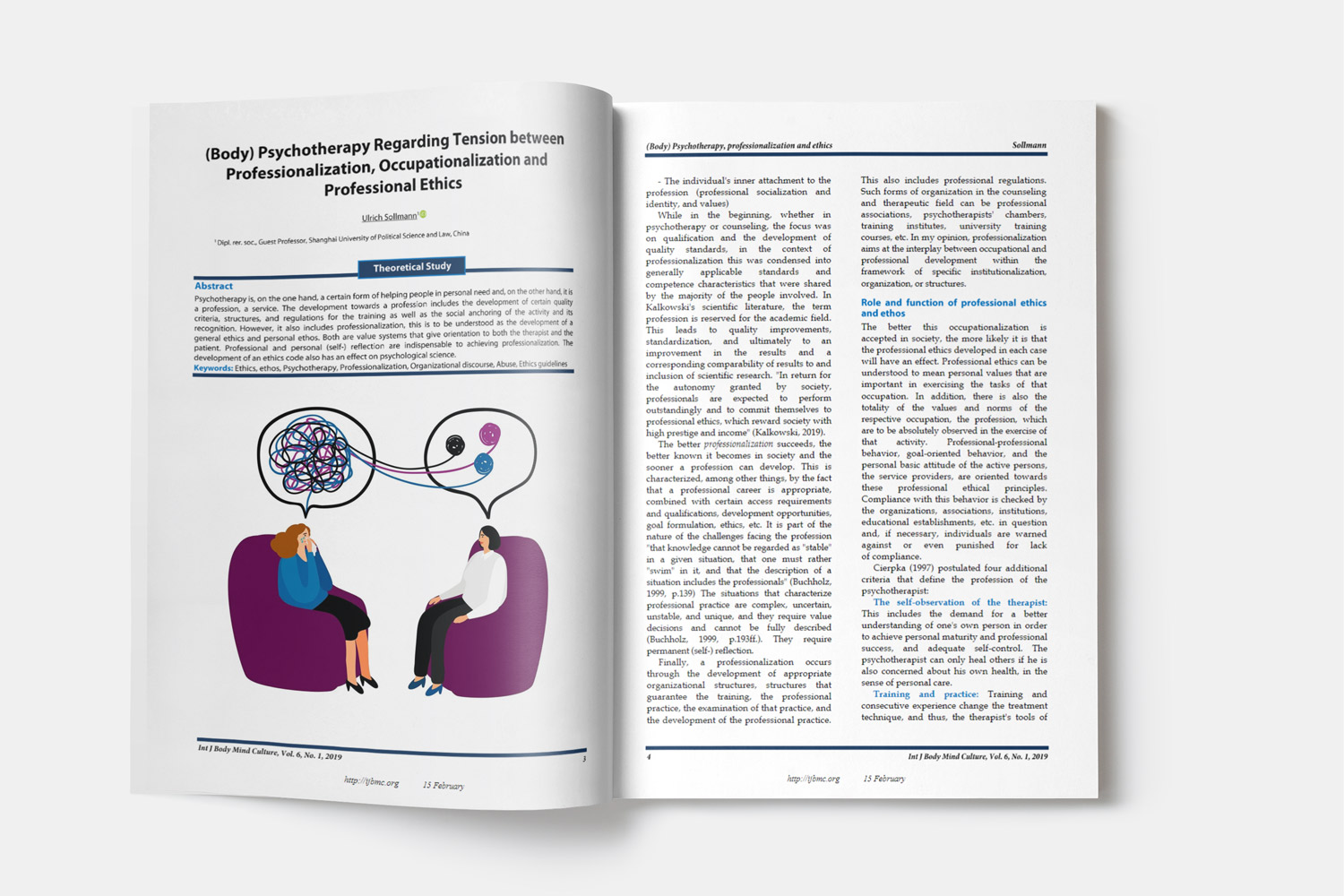The Prevalence of Sleep Disorders and the Related Factors in Iranian Preschool Children
Sleep disorders in Iranian preschool children
Downloads
Background: The prevalence of sleep disorders is different in international studies. Sleep disorders are among the most prevalent disorders among children. Various factors are involved in the pathogenesis of these disorders. The present study was conducted with the aim to determine the prevalence of sleep disorders and the related factors in Iranian preschool children.
Methods: This descriptive cross-sectional study was conducted on 384 children of 3-6 years of age in Isfahan, Iran, in 2020. The statistical population consisted of 17000 children in kindergartens under the supervision of the Isfahan Welfare Organization. Using Krejcie and Morgan’s table, the children were selected through multi-stage cluster sampling. The data were collected by the Sleep Disturbance Scale for Children (SDSC) completed by mothers. The data were analyzed using Pearson and Spearman correlation, and multiple regression analysis in SPSS software.
Results: The results revealed that 19.01% of children (n = 37) had disorders of initiating and maintaining sleep (DIMS), 7.29% of children (n = 28) had sleep breathing disorders, 22.3% of them (n = 86) had sleep-wake transition disorders (SWTD), 23.1% of children (n = 89) had disorders of excessive somnolence (DOES), 16.9% of children (n = 65) had sleep hyperhidrosis, and 19.01% of them (n = 73) had sleep disorders or disorders of arousal nightmares in some cases. Regression analysis also showed that the incidence of sleep disorders was significantly related to gender and fathers’ level of education, i.e., 1.1% of variations in children’s sleep disorders were explained by gender (P < 0.05), and 3.1% of the variations was explained by fathers’ level of education (P < 0.001).
Conclusion: The high prevalence of sleep problems among children necessitates informing parents and healthcare providers about the importance of healthy sleep patterns.
Downloads
Acebo, C., Sadeh, A., Seifer, R., Tzischinsky, O., Hafer, A., & Carskadon, M. A. (2005). Sleep/wake patterns derived from activity monitoring and maternal report for healthy 1- to 5-year-old children. Sleep, 28(12), 1568-1577. doi:10.1093/sleep/28.12.1568 [doi]. Retrieved from PM:16408417
Alfonsi, V., D'Atri, A., Scarpelli, S., Mangiaruga, A., & De Gennaro, L. (2019). Sleep talking: A viable access to mental processes during sleep. Sleep Med Rev, 44, 12-22. doi:S1087-0792(18)30080-7 [pii];10.1016/j.smrv.2018.12.001 [doi]. Retrieved from PM:30594004
American Psychiatric Association. (2013). Diagnostic and statistical manual of mental disorders. 5th ed. Washington, DC: American Psychiatric Association Publishing.
Assari, S. (2021). Parental Education and Children's Sleep Disturbance: Minorities' Diminished Returns. Int J Epidemiol.Res, 8(1), 31-39. Retrieved from PM:34263059
BaHammam, A., AlFaris, E., Shaikh, S., & Bin, S. A. (2006). Prevalence of sleep problems and habits in a sample of Saudi primary school children. Ann Saudi.Med, 26(1), 7-13. doi:asm-1-7 [pii];10.5144/0256-4947.2006.7 [doi]. Retrieved from PM:16521868
Bharti, B., Malhi, P., & Kashyap, S. (2006). Patterns and problems of sleep in school going children. Indian Pediatr., 43 (1), 35-38. Retrieved from PM:16465004
Biggs, S. N., Lushington, K., van den Heuvel, C. J., Martin, A. J., & Kennedy, J. D. (2011). Inconsistent sleep schedules and daytime behavioral difficulties in school-aged children. Sleep Med, 12(8), 780-786. doi:S1389-9457(11)00208-5 [pii];10.1016/j.sleep.2011.03.017 [doi]. Retrieved from PM:21862401
Brockmann, P. E., Diaz, B., Damiani, F., Villarroel, L., Nunez, F., & Bruni, O. (2016). Impact of television on the quality of sleep in preschool children. Sleep Med, 20, 140-144. doi:S1389-9457(15)00822-9 [pii];10.1016/j.sleep.2015.06.005 [doi]. Retrieved from PM:26299471
Bruni, O., Ottaviano, S., Guidetti, V., Romoli, M., Innocenzi, M., Cortesi, F. et al. (1996). The Sleep Disturbance Scale for Children (SDSC). Construction and validation of an instrument to evaluate sleep disturbances in childhood and adolescence. J Sleep Res, 5(4), 251-261. doi:10.1111/j.1365-2869.1996.00251.x [doi]. Retrieved from PM:9065877
Feng, S., Huang, H., Wang, N., Wei, Y., Liu, Y., & Qin, D. (2021). Sleep Disorders in Children With Autism Spectrum Disorder: Insights From Animal Models, Especially Non-human Primate Model. Front.Behav Neurosci, 15, 673372. doi:10.3389/fnbeh.2021.673372 [doi]. Retrieved from PM:34093147
Fricke-Oerkermann, L., Pluck, J., Schredl, M., Heinz, K., Mitschke, A., Wiater, A. et al. (2007). Prevalence and course of sleep problems in childhood. Sleep, 30(10), 1371-1377. doi:10.1093/sleep/30.10.1371 [doi]. Retrieved from PM:17969471
Hamed, S. A., Fawzy, M., & Hamed, E. A. (2021). Behavioral problems in children with primary monosymptomatic nocturnal enuresis. Compr.Psychiatry, 104, 152208. doi:S0010-440X(20)30050-X [pii];10.1016/j.comppsych.2020.152208 [doi]. Retrieved from PM:33186836
Herwanto, H., Lestari, H., Warouw, S. M., & Salendu, P. M. (2018). Sleep disturbance scale for children as a diagnostic tool for sleep disorders in adolescents. Paediatrica Indonesiana, 58(3), 133-137. doi:10.14238/pi58.3.2018.133-7 [doi].
Hoban, T. F. (2013). Sleep disorders in children. Continuum (Minneap.Minn.), 19(1 Sleep Disorders), 185-198. doi:00132979-201302000-00017 [pii];10.1212/01.CON.0000427206.75435.0e [doi]. Retrieved from PM:23385701
Jahanpour, F., Azodi, P., & Ghasemi, N. (2004). Factors affecting enuresis. Nursing and Midwifery, 2004,19 (5), S17-19.
Jalilolgadr, S., Barikani, A., & Soltanzadi, A. (2014). Prevalence of Sleep Bruxism in Six Year-old Childrenin Qazvin (2011). Iran J Psychiatry Clin Psychol, 19(4), 255-263.
Jalilolghadr S., Pakpour-Hajiagha A , Heidaralifard M , Pakzad R . Evaluation of sleep habits and sleep patterns among 7-12-year-old students in Qazvin, Iran; A school-based cross-sectional study. J Compr Ped. 2018;9(3):e67189. doi:10.5812/compreped.67189 [doi].
Jolin, E. M., & Weller, R. A. (2011). Television viewing and its impact on childhood behaviors. Curr Psychiatry Rep., 13(2), 122-128. doi:10.1007/s11920-011-0175-5 [doi]. Retrieved from PM:21267680
Kamphuis, J., & Lancel, M. (2015). The interrelations between sleep, anger, and loss of aggression control. In K.A. Babson & M. T. Feldner (Eds.), Sleep and Affect (pp. 247-271). San Diego, CA: Academic Press.
Kliegman, R. M., Marcdante, K., Behrman, R. E., & Jenson, H. B. (2008). Nelson textbook of pediatrics (18th Edition). Philadelphia, PA: Saunders.
Krejcie, R. V., & Morgan, D. W. (1970). Determining sample size for research activities. Educational and Psychological Measurement, 30(3), 607-610. doi: 10.1177/001316447003000308 [doi].
Li, S., Jin, X., Wu, S., Jiang, F., Yan, C., & Shen, X. (2007). The impact of media use on sleep patterns and sleep disorders among school-aged children in China. Sleep, 30(3), 361-367. doi:10.1093/sleep/30.3.361 [doi]. Retrieved from PM:17425233
MacLean, J. E., Fitzgerald, D. A., & Waters, K. A. (2015). Developmental changes in sleep and breathing across infancy and childhood. Paediatr.Respir.Rev, 16(4), 276-284. doi:S1526-0542(15)00072-X [pii];10.1016/j.prrv.2015.08.002 [doi]. Retrieved from PM:26364005
Maski, K., & Owens, J. A. (2016). Insomnia, parasomnias, and narcolepsy in children: clinical features, diagnosis, and management. Lancet.Neurol., 15(11), 1170-1181. doi:S1474-4422(16)30204-6 [pii];10.1016/S1474-4422(16)30204-6 [doi]. Retrieved from PM:27647645
Meltzer, L. J., & Moore, M. (2008). Sleep disruptions in parents of children and adolescents with chronic illnesses: prevalence, causes, and consequences. J Pediatr.Psychol, 33(3), 279-291. doi:jsm118 [pii];10.1093/jpepsy/jsm118 [doi]. Retrieved from PM:18084038
Mohammadi, M., Ghaleh, B. B., Ghalehbandi, M. F., Amin, T. E., Khodaei, S. H. A. H., Shoaee, S. H. et al. (2007). Sleep patterns and sleep problems among preschool and school-aged group children in a primary care setting. Iran J Ped, 17(3), 213-221.
Mohsenzadeh, A., Farhadi, A., Tarrahi, M. J., & Pedram, A. (2009). Prevalence of sleep disorders in khorramabad 7-12 year old elementary school children in school year 2006-2007. Yafteh, 11(3), 41-49.
Montplaisir, J., Zadra, A., Nielsen, T., & Petit, D. (2017). Parasomnias. In S. Chokroverty (Ed.), Sleep Disorders Medicine: Basic Science, Technical Considerations and Clinical Aspects (pp. 1087-1113). New York, NY: Springer New York.
Otsuka, Y., Kaneita, Y., Spira, A. P., Mojtabai, R., Itani, O., Jike, M. et al. (2021). Trends in sleep problems and patterns among Japanese adolescents: 2004 to 2017. Lancet.Reg.Health West Pac., 9, 100107. doi:S2666-6065(21)00016-X [pii];100107 [pii];10.1016/j.lanwpc.2021.100107 [doi]. Retrieved from PM:34327435
Ozgoli, G., Sheikhan, Z., Soleimani, F., Nasiri, M., & Amiri, S. (2016). Prevalence of Sleep Disorders Among Children 4 - 6 Years Old in Tehran Province, Iran. Iran Red.Crescent.Med J, 18(7), e22052. doi:10.5812/ircmj.22052 [doi]. Retrieved from PM:27651942
Petit, D., Touchette, E., Tremblay, R. E., Boivin, M., & Montplaisir, J. (2007). Dyssomnias and parasomnias in early childhood. Pediatrics., 119(5), e1016-e1025. doi:peds.2006-2132 [pii];10.1542/peds.2006-2132 [doi]. Retrieved from PM:17438080
Sadat Hoseini A.S. (2013). Survey Of The Effect Of Non Pharmacological Intervention To Improve Of Sleep In Pediatric, That Suffering Of Chronic Illness. Iranian Journal Of Nursing Research, 7(27), 60-72.
Sadock, B. J., & Sadock, V. A. (2008). Kaplan & Sadock's Concise Textbook of Clinical Psychiatry. Philadelphia, PA: Lippincott Williams & Wilkins.
Singh, G. K., & Kenney, M. K. (2013). Rising Prevalence and Neighborhood, Social, and Behavioral Determinants of Sleep Problems in US Children and Adolescents, 2003-2012. Sleep Disord., 2013, 394320. doi:10.1155/2013/394320 [doi]. Retrieved from PM:23819057
Sinha, D., & Guilleminault, C. (2010). Sleep disordered breathing in children. Indian J Med Res, 131, 311-320. Retrieved from PM:20308756
Stefani, A. (2020). , Högl B. Other Sleep-Related Movement Disorders. In E.H. During & C. A. Kushida (Eds.), Clinical Sleep Medicine: A Comprehensive Guide for Mental Health and Other Medical Professionals. Washington, DC: American Psychiatric Association Publishing.
Taras, H., & Potts-Datema, W. (2005). Sleep and student performance at school. J Sch Health, 75(7), 248-254. doi:JOSH33 [pii];10.1111/j.1746-1561.2005.00033.x [doi]. Retrieved from PM:16102087
Tietze, A. L., Blankenburg, M., Hechler, T., Michel, E., Koh, M., Schluter, B. et al. (2012). Sleep disturbances in children with multiple disabilities. Sleep Med Rev, 16(2), 117-127. doi:S1087-0792(11)00035-9 [pii];10.1016/j.smrv.2011.03.006 [doi]. Retrieved from PM:21620745
Tikotzky, L., De Marcas, G., Har-Toov, J., Dollberg, S., Bar-Haim, Y., & Sadeh, A. (2010). Sleep and physical growth in infants during the first 6 months. J Sleep Res, 19(1 Pt 1), 103-110. doi:JSR772 [pii];10.1111/j.1365-2869.2009.00772.x [doi]. Retrieved from PM:19840242
Wills, L., & Garcia, J. (2002). Parasomnias: epidemiology and management. CNS.Drugs., 16(12), 803-810. doi:161202 [pii];10.2165/00023210-200216120-00002 [doi]. Retrieved from PM:12421114
Copyright (c) 2023 International Journal of Body, Mind and Culture

This work is licensed under a Creative Commons Attribution-NonCommercial 4.0 International License.















